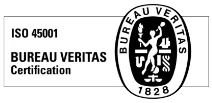Mould
Mould is a health hazard that can lead to increased illness in your household, so it is important to manage it as best you can
Often mould will grow on almost any surface where moisture is present and is often black in colour. However, mould can come in all colours and can grow in all different types of environment, wet or dry. They reproduce by releasing vast numbers of tiny spores into the air.
Despite popular opinion that only black mould is toxic, all moulds are hazardous to health in some way, especially if levels are over that deemed safe.

What Can I Do To Manage Mould In My Home?
There are many contributing factors to mould growth but poor insulation, lack of vents/fans, heating methods and overcrowding of rooms are the most common reasons that mould may grow in your home.
Small amounts of mould, commonly referred to as “Household Mould”, can be managed by you.

What If I Have Extensive Mould?
If the mould is in a large quantity or is located in a damp area, it’s best to leave it and get in an experienced company to deal with its removal.
Stachybotrys is a black mould which thrives in wet/damp environments. If there is water damage or leaks in your property, there is the potential for Stachybotrys growth.
Many homeowners or builders make the mistake of thinking that removal of mould is easy. Unfortunately, incorrect removal of mould can cause a multitude of issues.

Don’t risk the health of your family – contact Savy Enviro Services to obtain a quote for the safe removal of mould.



